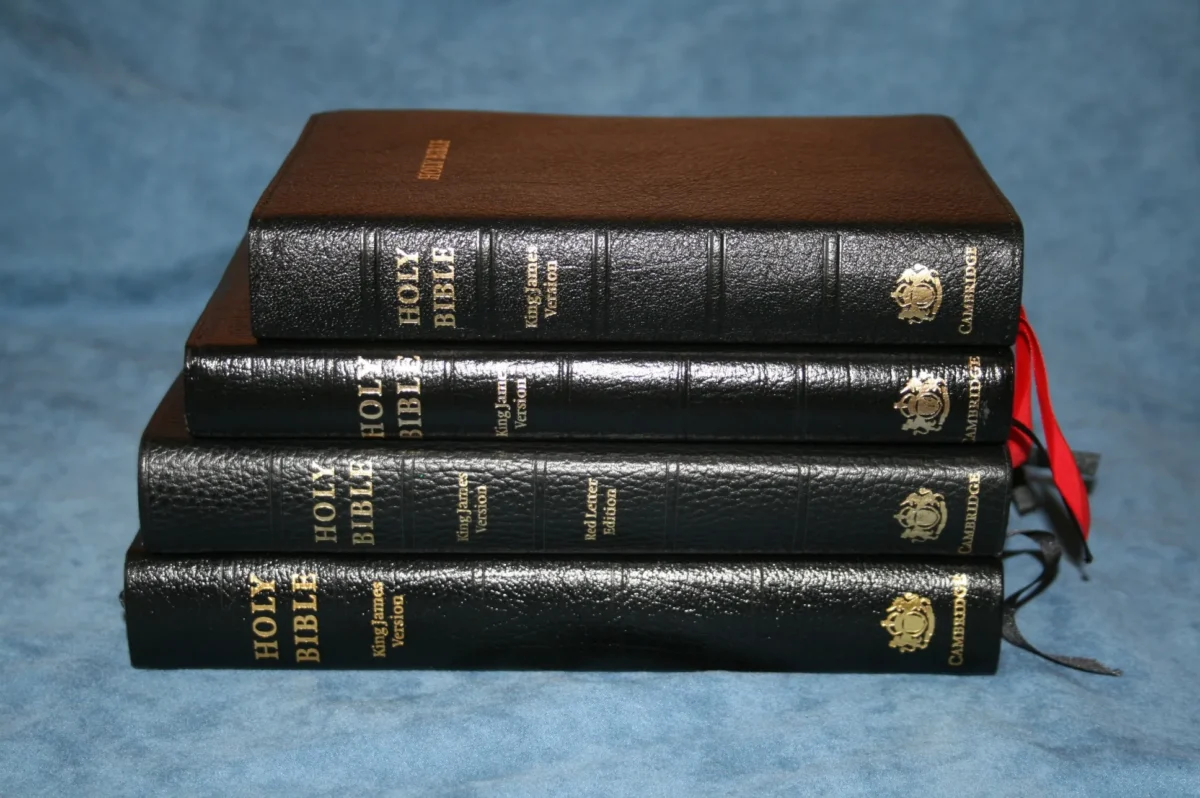Ever wondered why frogs hop across the pages of the Bible? They’re not just there to fill the ponds of Goshen or to plague the Egyptians. Frogs hold a deeper symbolic meaning in biblical texts, and it’s more riveting than you might think.

You’ll find that these amphibians aren’t merely background characters; they play a pivotal role in conveying messages of transformation, uncleanliness, and even the end times. Dive into the ancient scriptures with us, and you’ll discover the hidden symbolism of frogs that’s been leaping out of the Bible for centuries.
The Origins of Frogs in the Bible
The first thing you’ve got to know is that the Bible isn’t just a book; it’s a collection of writings that span centuries. Frogs make their debut in this vast timeline in the book of Exodus. They appear during one of the most epic narratives in the Bible, the story where Moses is standing up to Pharaoh, the ruler of Egypt.

The Exodus account tells about ten plagues that struck Egypt, and frogs were the centerpiece of the second plague. Picture this: you’re in ancient Egypt, and all of a sudden, there are frogs everywhere – in your bed, in your oven, and even in your bowl of cereal (well, whatever the ancient Egyptians had for breakfast). It wasn’t just inconvenient; it was downright chaotic.
What’s crucial to grasp here is the why. The Egyptians worshipped a pantheon of gods, and one of them was Heket, depicted as a woman with a frog’s head. She was the goddess of fertility and childbirth. By sending a deluge of frogs, God wasn’t just shaking up Pharaoh’s day; He was showing that He’s the one true God, powerful over even the deities the Egyptians held dear.
Skipping ahead to the New Testament, frogs hop onto the scene once more in the book of Revelation. This time, they’re symbols of unclean spirits and part of the prophecies speaking about the end of the world. But these aren’t just regular old frogs. They’re described as coming from the mouths of dragons and beasts – the stuff of nightmares, really. You won’t find them on lily pads; these frogs are part of a cosmic battle between good and evil.
Understanding these origins and contexts about frogs in biblical times is like finding pieces of a puzzle. You’re seeing a snapshot of how people back then might have viewed frogs, not just as amphibians but as harbingers of something bigger – whether it’s a challenge to authority in Exodus or a foreboding sign in Revelation. It’s all part of a larger story that has continued to fascinate and instruct over millennia.
The Plague of Frogs
Imagine waking up to croaking all around and finding your home filled with frogs—this is exactly what went down in Egypt. The second plague God sent showed he meant business. This frog invasion got everyone’s attention, proving that the God of the Israelites had some serious power.
The Nile River was life for the Egyptians; they depended on it for water, food, and farming. When God turned the river into a frog-producing machine, He struck the Egyptians where it hurt. Even Pharaoh’s palace wasn’t off-limits. Frogs were in their beds, ovens, and even their kneading bowls! Talk about a froggy nightmare.
What’s more, instead of just one frog here and there, the land swarmed with these amphibians. It was a full-on infestation. Imagine trying to cook your dinner, and boom—a frog hops right out of your cup!
So, what was the lesson here? It boiled down to showing Pharaoh and the Egyptians that their gods weren’t as great as they thought. Heket, the frog-headed goddess of fertility, was rendered powerless against the true God. This sent a clear message: the God of the Hebrews was not someone to mess with.
Let’s think about the frogs not just as animals but as symbols. They represented a disruption of life, a divine interruption that made everyone stop and reassess their whole situation. It’s like when something big happens to you and suddenly you’ve got to reconsider everything. That’s what these frogs did for the Egyptians.
The Symbolism of Frogs in Ancient Cultures
Before we dive further into the biblical standpoint, let’s take a hop over to how ancient cultures viewed frogs. You might find it cool how these little creatures held a lot of weight in different societies.

In ancient Egypt, the frog was a big deal. It symbolized fertility, rebirth, and renewal because of how they reproduce and their lifecycle in the water and on land. Now, remember the goddess Heket? She had a frog’s head and was associated with childbirth. So seeing frogs everywhere wasn’t just annoying for the Egyptians during the plagues – it was kind of a shock to their system.
But it wasn’t just the Egyptians who were into frogs. The Greeks and Romans had their take, too. To them, frogs symbolized harmony and stability, probably because they always hung around water sources which were key for life.
And let’s jump over to the East – in China, frogs are linked to good luck and prosperity. They’ve got this three-legged frog, kinda like a mascot of wealth, often shown with coins around its neck.
It’s fascinating to see how different cultures see the same animal in various lights. While the Egyptians were getting a bit flustered with the frog chaos, other folks around the world might have been wishing for a bit of that froggy fortune.
Understanding their symbolism isn’t just about figuring out ancient animal fandoms. It’s about looking at the bigger picture and what these critters stood for in the grand scheme of things. When the Bible brings up frogs, it’s tapping into these deep beliefs and either challenging them or reinforcing some powerful messages. So if you’re trying to get a grip on Christian symbols, starting with these little amphibians isn’t a bad jump-off point. Keep this in mind – you’re looking at a creature that has hopped through history leaving quite the footprint, or webbed footprint, if you will.
Frogs as Messengers of Transformation
Imagine reading the Bible and stumbling upon those stories where creatures crawl out of the pages and symbolize something much bigger than themselves. That’s kind of like what happens with frogs. In the Bible, these little hoppers are more than just pond dwellers; they’re messengers of change and transformation.
« Is Yellowcard a Christian Band? Exploring the Band’s Religious Beliefs
Unlock the Secret: How Number 17 Signals Victory in the Bible »
Think about it this way: frogs start as tadpoles in water, then morph into land-hoppin’ frogs. This life cycle makes them the perfect symbol for transformation. It’s like they’re showing us how change can be a good thing, even if it’s uncomfortable or a little scary at first.
When frogs show up in the Bible, it’s usually a heads-up that something big is about to go down. In Exodus, the frog plague wasn’t just an annoyance; it was a sign to the Egyptians that God meant business. Those frogs were like a divine wake-up call, pushing for a massive transformation in the hearts and minds of Pharaoh and his people.
Fast forward to the New Testament in the book of Revelation, where frogs leap out as symbols of unclean spirits. Again, it’s about change—this time signaling the need to clean house, spiritually speaking. Those squishy critters hopping out of the mouths of dragons and beasts in visions? They remind us that sometimes things have to get a little wild before real change can happen.
So as you’re walking through your faith journey, remember the frogs. Their presence in Scripture is no accident—it’s a divine nudge to embrace transformation, even when it hops into your life unannounced. It’s about being open to the profound changes that faith can bring, just like the tadpole’s leap into becoming a frog.
The Significance of Uncleanliness

In the grand tapestry of biblical narratives, the concept of uncleanliness stands out, especially when you’re trying to figure out what’s ‘clean’ and ‘unclean’ in Scripture. Uncleanliness is often a metaphor for sinfulness or spiritual impurity. It’s like having dirt on your hands that you need to wash off before dinner.
Imagine walking into your house after a muddy soccer game; you wouldn’t hop onto your bed without a clean-up, right? Similarly, in the Bible, unclean things are often compared to actions or attitudes that separate individuals from God’s standards. It’s about getting your spiritual life scrubbed clean.
When frogs are referred to as unclean spirits in the book of Revelation, it’s not just about the amphibians themselves but what they represent, kind of like mascots for stuff we don’t want in our lives – deceit, immorality, and other bad news. Just as you wouldn’t want mud tracked all over your clean floors, the Bible uses these symbols to encourage a life without the messiness of spiritual uncleanliness.
- Takeaway themes from “unclean” symbols include:
- Recognizing actions that may not align with faith
- Understanding the need for spiritual cleanliness
- Identifying areas of life that require change
Through these narratives, you’re invited to reflect on personal transformations needed to align closer with your faith. You don’t turn a blind eye to the mud in your life. Instead, you address it, clean it up, and come back better. When dealing with the uncleanliness, always remember it’s less about the physical aspect and more about getting your heart in the right place.
Rather than viewing these unclean symbols as purely negative, see them as prompts for positive change – an opportunity to step back, reevaluate, and scrub away anything that’s keeping you from a fulfilling spiritual journey.
The Frog in End Time Prophecies

In your journey through the Bible, you’ll come across passages that might feel like they’re straight out of a blockbuster movie. One such part is where frogs leap onto the scene in the context of end-time prophecies. Revelation 16:13 talks about three unclean spirits that look like frogs coming out of the mouth of the dragon, the beast, and the false prophet.
These critters aren’t just a random choice. Remember how frogs were a sign of uncleanness earlier? Well, here they’re signaling something mega important. They represent deception leading up to the end times. Think about it like this: just before the world’s big finale, these unclean spirits are working overtime to trick people.
- Dragon’s frog: embodies Satan pulling his greatest cons.
- Beast’s frog: symbolizes oppressive governments going rogue.
- False prophet’s frog: stands for religions that strayed from the truth.
Seeing these frogs pop up in prophecies is like a heads-up from the coach. It’s a play-by-play telling you to stick close to what’s true, stay alert, and don’t fall for the slick tricks of these end-time critters. It’s not about fear but about preparation. You’re being called to put on your game face and stand firm in your faith.
These verses are a reminder to keep your eyes open. In your life, you’ll encounter lots of voices and influences. Some might be as slick as a wet frog, trying to lead you astray. That’s when you’ve got to dive deep into your playbook – the Bible – and check the moves you need to make against it. Just because the world is running full court press with its distractions doesn’t mean you’ve got to play into its hands.
Keep this in the back of your mind: the presence of frogs in these prophecies isn’t about the amphibians themselves. It’s about staying spiritually on point, so you’re ready no matter what the end times throw at you. And hey, who doesn’t love a good underdog story where the faithful come out on top?
Conclusion

So you’ve seen how frogs, those seemingly innocuous amphibians, carry a weighty message in biblical texts. They’re not just critters that hop along your garden path but symbols calling for your vigilance against deceit and moral waywardness. Let this knowledge be a beacon for you, guiding your steps towards spiritual purity and readiness for what lies ahead. As you navigate your journey, remember the lessons these biblical frogs impart and stay true to your path of faith.
















:max_bytes(150000):strip_icc()/How-To-Clean-Books-1-7bec176f612c42dab35c1e96f95a4cde.jpg)